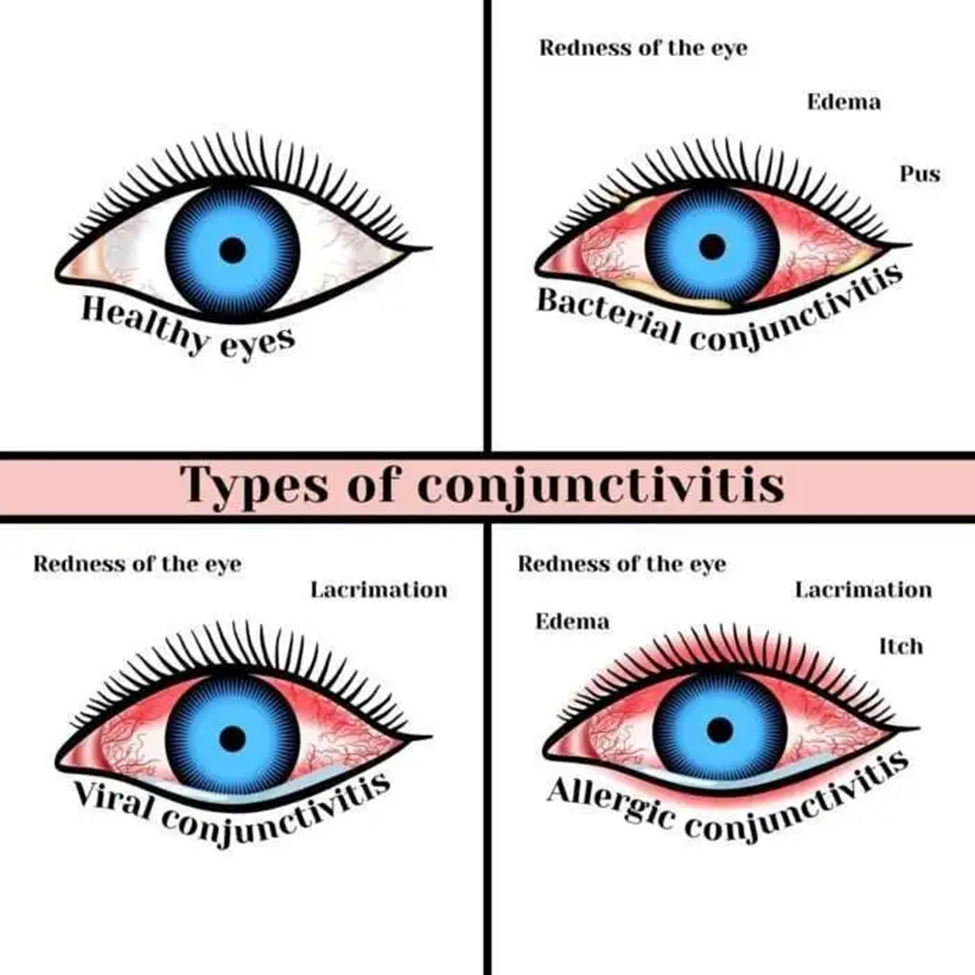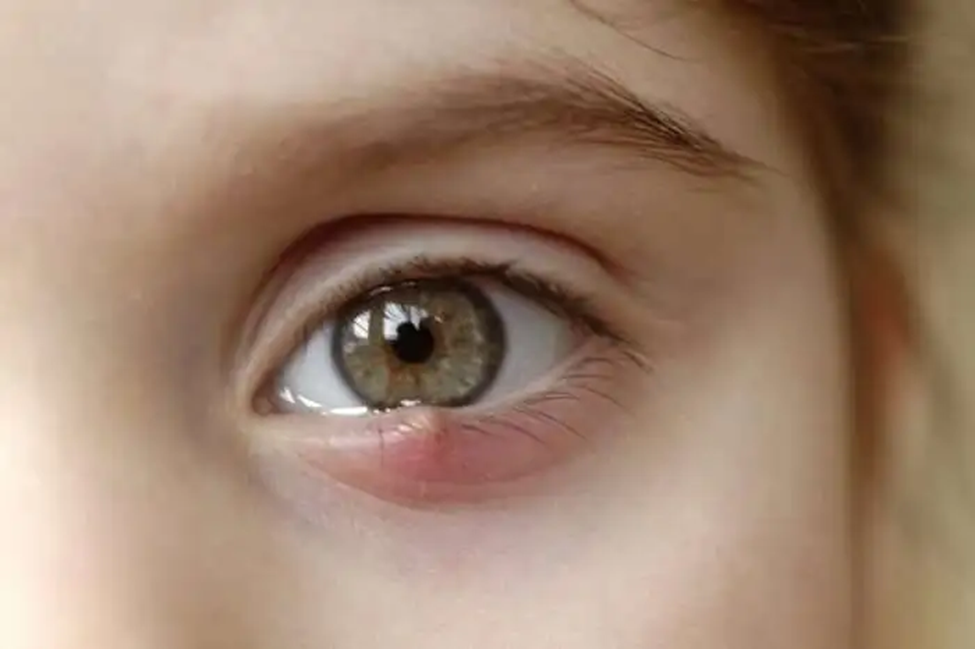
It can be very unpleasant and disconcerting if your eyes start to itch, swell, burn or turn a shade of pink. You’re probably wondering if it could it be an infection.
Eye infections like conjunctivitis, styes and eyelid inflammation are more common than you’d think and have a number of possible causes – bacteria, fungi and viruses. Dry eyes can feel like a possible infection as well. Each of these are treated differently.
The good news is eye infections aren’t hard to spot, so you can seek treatment quickly. Your doctor may prescribe medication you take by mouth, an ointment you spread on your eyelid and/or eye, or eyedrops. This article will talk about medications used for different types of eye infections and we will touch on dry eye treatment as well.
Types of Eye Infections
- Pink Eye, Or Conjunctivitis.
Conjunctivitis is infection or inflammation of the conjunctiva, which covers the white part of the eye and lines the inside of the eyelids, as well. It is the most common eye infection affecting children. Conjunctivitis can be caused by multiple things. Viruses are the most common cause, although it can also be caused by bacteria and allergies.
Viral pink eye usually starts in one eye but can spread to the other eye and is often associated with a cold or other respiratory infection, as well as with watery discharge from the eye.
Generally, your doctor will let the virus run its course. Cold compresses applied 3 times daily for 1 – 3 weeks may relieve discomfort. Your doctor may also prescribe antiviral eyedrops, such as acyclovir (Zovirax) or trifluridine (Viroptic). Treatment is supportive and may include ocular decongestants(Naphazoline, Oxymetazoline), and artificial tears.
Bacterial pink eye can start with a respiratory infection or an ear infection, affect one or both eyes and cause a thick discharge (pus) that makes the eyes stick together.
Bacterial pink eye is generally treated with antibiotic eyedrops, such as sodium sulfacetamide (Cetamide, Bleph-10), or eye ointment such as erythomycin (E-Mycin), bacitracin, or neomycin.
Allergic pink eye can be triggered by allergens including pollen, animal dander and dust mites. Avoiding the allergen is important in the treatment of allergic conjunctivitis.
Antihistamine eyedrops, such as over the counter antazoline phosphate (Vasocon-A) or prescription olopatadine ophthalmic (Patanol), may reduce swelling or itching.
- Keratitis
Infectious keratitis occurs when your cornea gets infected. The cornea is the clear layer that covers your pupil and iris. Keratitis results from either an infection (bacterial, viral, fungal, or parasitic) or an eye injury.
Although less common, keratitis is more likely to have an impact on vision because it affects the cornea. Symptoms of keratitis include blurred vision and light sensitivity, though some people with pink eye experience these symptoms as well. Although both are uncomfortable, keratitis tends to be more painful than pink eye
Bacterial keratitis. Pseudomonas aeruginosa and Staphylococcus aureus are the two most common types of bacteria that cause bacterial keratitis. It mostly develops in people who use contacts improperly.
The traditional therapy for bacterial keratitis is fortified antibiotics, tobramycin (14 mg/mL) 1 drop every hour alternating with fortified cefazolin (50 mg/mL) or vancomycin (50mg/mL) 1 drop every hour These eye drops are available at specialized compounding pharmacies. In current practice, fourth-generation fluoroquinolones are increasingly being used as monotherapy, especially in cases of smaller and less-severe keratitis.
Viral keratitis. Viral keratitis is primarily caused by the herpes simplex virus, which progresses from conjunctivitis to keratitis.
Your doctor will prescribe antiviral eye drops or an antiviral oral medication or both. Examples include topical ganciclovir or trifluridine, oral or IV acyclovir or valacyclovir. For stromal involvement or uveitis, topical corticosteroids (Prednisolone Acetate), in addition to antiviral medications are often prescribed.
Fungal keratitis. Fungal keratitis is caused by Aspergillus, Candida, or Fusarium. As with bacterial keratitis, fungal keratitis is most likely to affect those who wear contact lenses.
Natamycin is a topical (meaning it’s given in the form of eye drops) antifungal medication that works well for fungal infections. However, infections that are deeper and more severe may require treatment with oral antifungal medication such as amphotericin B, fluconazole, or voriconazole.
Acanthamoeba keratitis. Keratitis that’s caused by the tiny parasite acanthamoeba can be difficult to treat. Antibiotic eyedrops are used, but some acanthamoeba infections are resistant to medication. Severe cases of acanthamoeba keratitis may require a cornea transplant.
- Sty
A sty (also called a hordeolum) is a pimple-like bump that develops from an oil gland on the outer edges of your eyelids. These glands can get clogged with dead skin, oils, and other matter and allow bacteria to overgrow in your gland. The resulting infection causes a sty.
Some treatments for sties include: applying a clean, warm, damp cloth to your eyelids for 20 minutes intervals a few times a day, using mild, scent-free soap and water to clean your eyelids, taking over-the-counter (OTC) pain relievers, such as acetaminophen (Tylenol), to help with pain and swelling, stopping use of contact lenses and eye makeup until the infection goes away, using antibiotic ointments to help kill the infectious overgrowth, such as erythomycin (E-Mycin), bacitracin, or neomycin.
If you wear contact lenses, you should wear only your eyeglasses until you have visited your eye doctor for diagnosis and treatment.
Dry Eyes:
Dry eyes may not be caused by an infection. Although, having chronic dry eyes may increase your chances of getting an eye infection. Some of the symptoms of dry eye disease include achy, dryness, stinging, burning, irritation, grittiness, feeling like you have something in your eye and/or itchiness. In some cases, dry eyes can be treated effectively with an over-the-counter eye lubricants or artificial tears. These treatments offer temporary relief and if your symptoms continue to return, don’t ignore it – speak with your eye doctor to see if you need something else.
This article goes in to a little more depth on the topic of dry eyes:
https://canadadrugstore.com/article/are-cequa-eye-drops-for-dry-eyes-really-unique
Products such as Cequa, Restasis, and Xiidra are often prescribed for dry eyes. Only you and your physician can decide which eye drop is best for you.
Reference:
- healthline.com
- allaboutvision.com
- webmd.com
- mayoclinic.org
If you have questions about your prescription medications or any other medication, please contact our team at Jason’s CanadaDrugstore.com by calling toll free 1-800-226 3784 (CAN-DRUG). One of our patient representatives will be happy to assist you or transfer you to a licensed Canadian pharmacist for a free consultation.
This article contains medical information provided to help you better understand this medical condition or process and may contain information about medication often used as part of a treatment plan prescribed by a doctor. It is not intended to be used as either a diagnosis or recommendation for treatment of your medical situation. If you are unwell, concerned about your physical or mental state, or are experiencing symptoms you should speak with your doctor or primary health care provider. If you are in medical distress, please contact emergency services (such as 911).



Leave a Reply